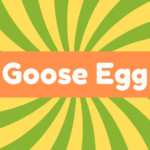When you think about Easter eggs, you might picture decorated eggs for a seasonal celebration, but their significance stretches far beyond that. You might be surprised to learn how these symbols of new life have tied into cultural practices and modern entertainment, influencing everything from ancient rituals to hidden surprises in video games. Curious about the historical journey of Easter eggs and how they continue to resonate today? It might just change how you view this familiar tradition.
What Does It Mean?
Often, when people think of Easter eggs, they envision beautifully decorated or dyed eggs given to children during the Easter celebration. However, in a more innovative context, “Easter eggs” refer to hidden features or messages, often tucked away in websites, video games, and software. These playful surprises might not be immediately obvious, requiring some exploration to uncover. They engage users, paving the way for unexpected delights. While you might enjoy these hidden elements, it’s vital to recognize that their purpose transcends mere fun; they encourage interaction and exploration. So, as you search for these hidden gems, remember that they reflect creativity and innovation, providing you with a deeper connection to the content you’re enjoying.
Synonyms
When exploring the concept of Easter eggs, several synonyms capture their essence, whether in the context of festive traditions or hidden features in digital content. You might find these terms quite fitting, as they emphasize the charm of hidden treasures and surprise elements:
- Hidden Gems – These may represent secret features in games or content waiting to be discovered.
- Surprise Gifts – Often tied to the playful spirit during celebrations, capturing the joy of unwrapping something unexpected.
- Secret Features – Usually a nod to intriguing elements in technology and media that users uncover through exploration.
- Mystery Items – Conveys the excitement of finding something unknown or unexpected, invoking curiosity.
Understanding these synonyms not only enriches your vocabulary but also deepens your appreciation for the underlying excitement of Easter eggs.
Example of Sentences
Easter eggs can pop up in various contexts, creating unexpected moments of joy and discovery. They often serve as playful surprises that catch you off guard. Here are some examples of sentences that capture the intrigue of Easter eggs:
- You might stumble upon creative Easter egg designs while exploring a new art exhibit.
- Players excitedly search for gaming Easter eggs in popular titles like Red Dead Redemption.
- Friends often hide Easter eggs in their birthday messages, adding a personal touch.
- Unexpected Easter eggs in movie credits can make the experience even more enjoyable.
These examples show how Easter eggs provide delightful discoveries, whether in art, gaming, or personal interactions, enhancing your experience and prompting exploration.
Origin
The origins of Easter eggs can be traced back to ancient traditions, blending pagan customs with early Christian practices. You might find it interesting that eggs have long symbolized new life, a theme cherished in many cultures. These pagan traditions celebrated fertility and renewal during spring, connecting closely with the egg’s essence. As Christianity spread, these vibrant symbols were adapted, signifying death and rebirth, ultimately tied to Christ’s resurrection. The practice of decorating eggs dates back to at least the 13th century, becoming a ritual observed after Lent. Today, while the cultural symbolism has evolved, these colorful eggs still carry traces of that innovative blend of ancient beliefs and modern celebrations, reminding us of our interconnected histories.
Collocations
Exploring collocations related to Easter eggs reveals intriguing connections between language and cultural practices. You might think of phrases that spring to mind during this festive season. Here are key collocations worth noting:
- Egg hunt – the cherished activity where kids enthusiastically search for hidden treasures.
- Hidden messages – these can be secrets tucked inside eggs, adding a playful twist.
- Decorated eggs – an important part of Easter traditions, bringing color and creativity.
- Surprise gifts – the excitement of finding unexpected tokens makes the celebrations memorable.
These collocations shed light on how language evolves alongside cultural habits. While they enhance our understanding, you should also recognize the commercialization of such traditions. Celebrating creativity shouldn’t overshadow the deeper meanings behind these practices.
How to Use in Everyday Language
Using the term “Easter egg” in everyday language can add a fun twist to conversations. You might refer to unexpected findings as creative surprises, whether in a novel, a video game, or even an elegant dinner party. It can enrich discussions about festive traditions, like uncovering hidden treats during a family Easter egg hunt. However, be mindful that overusing trendy terms can dilute their meaning. Clarity matters, so verify your audience grasps the context. For instance, if you mention an Easter egg in a software review, explain what makes it special. Ultimately, using this term can spark curiosity, but balance is key. Keep it fresh, relevant, and contextually appropriate to maintain engagement and avoid sounding cliché.
Why Is It Still Relevant Today?
Easter’s charm continues to captivate people of all ages, blending tradition with modern creativity. With the rise of digital engagement, Easter eggs have evolved into a unique way to maintain cultural continuity. They link old traditions with new technologies, appealing to those seeking innovation.
| Cultural Aspect | Digital Engagement | Modern Relevance |
|---|---|---|
| Symbol of new life | Gamified experiences | Community connection |
| Family rituals | Hidden digital features | Surprise and delight |
| Ancient customs | Interactive storytelling | Fusion of genres |
As you explore these layers, consider how Easter eggs resonate today: they not only remind us of our past but also invite new ways to engage, reflecting a culture that thrives on creativity and discovery.
Frequently Asked Questions
What Are Common Themes for Easter Eggs in Video Games?
In video games, you’ll often find hidden treasures and gameplay secrets. These surprises encourage exploration, reward curiosity, and enhance your experience, making each session feel fresh and innovative while you uncover delightful wonders throughout the game.
How Do Different Cultures Celebrate Easter Egg Traditions?
Imagine vibrant colors and joyous laughter as you explore global Easter customs. Each culture infuses unique traditions, weaving cultural significance into their celebrations, inviting you to discover the beauty of shared heritage and innovative expressions of joy.
What Are Some Creative DIY Easter Egg Decorating Ideas?
Get creative this Easter! Try natural dyeing techniques with fruits and vegetables, then embellish your eggs with stunning geometric patterns. You’ll love the vibrant results and unique touches that showcase your artistic flair!
How Can Easter Eggs Enhance Storytelling in Media?
Easter eggs can boost audience engagement by 30%, adding narrative depth and exciting surprises. When you embed them creatively in your media, you spark exploration, transforming the way people connect with your story.
Are There Famous Fictional Easter Eggs in Movies and TV Shows?
Famous fictional Easter eggs in movies and TV shows often showcase hidden references that enrich pop culture. When you spot these clever nods, you’re engaging with the creators’ innovative storytelling, enhancing your viewing experience.







